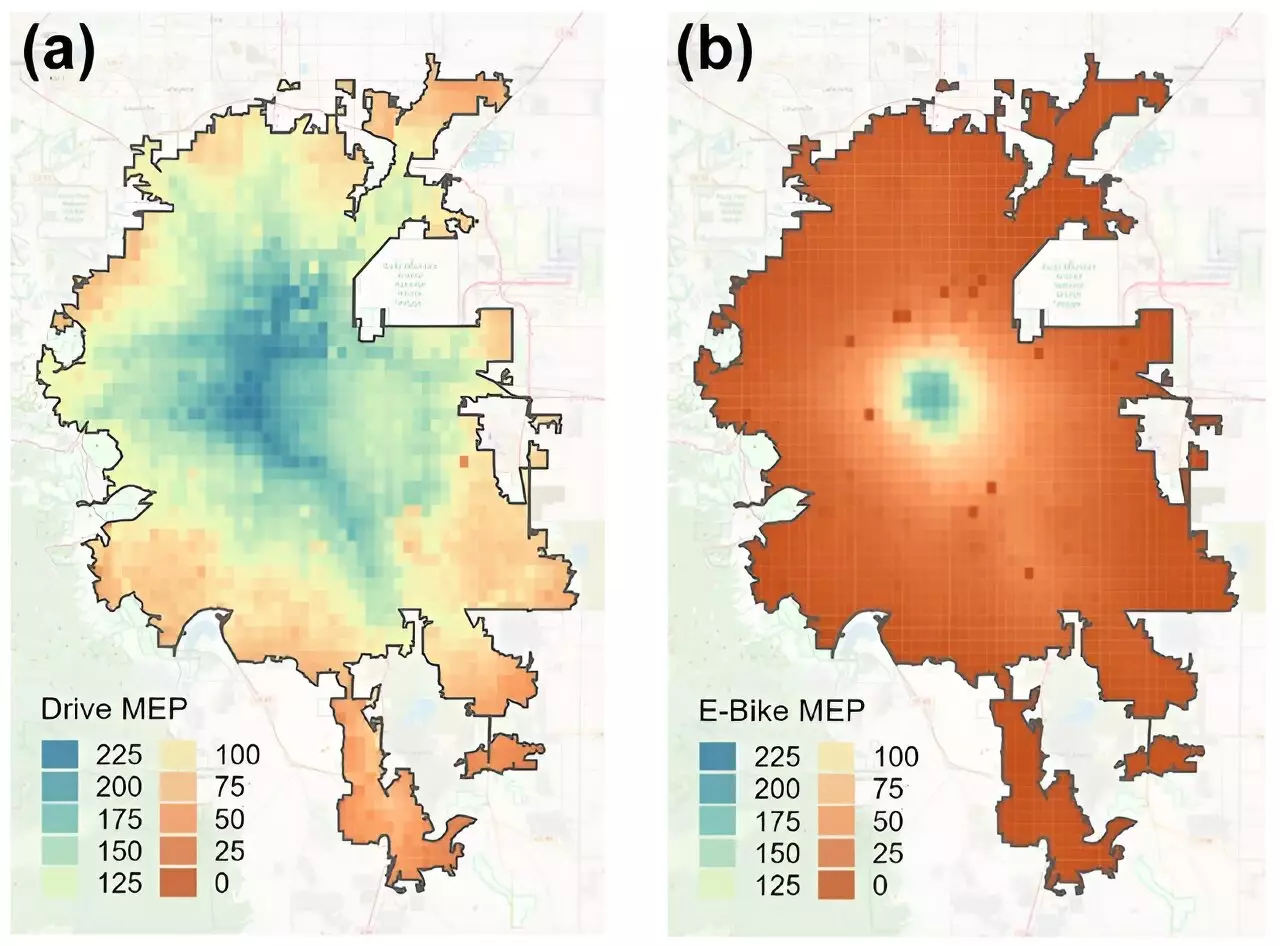Electric bikes (e-bikes) have gained popularity as an alternative mode of transportation, but how do they affect overall mobility? Can they provide the same level of access to opportunities as cars, while being time-, cost-, and energy-efficient? To answer these questions and evaluate the impact of e-bikes, researchers at the National Renewable Energy Laboratory (NREL) have developed a powerful combination of tools: the Open Platform for Agile Trip Heuristics (OpenPATH) and the Mobility Energy Productivity (MEP) metric. These tools enable transportation practitioners and planners to gain insights into the benefits of e-bikes for sustainable, equitable, and efficient mobility.
NREL demonstrated the integration of OpenPATH and MEP in a study that focused on providing e-bikes to low-income essential workers in Colorado. By analyzing data from nearly 50,000 trips collected through OpenPATH, the researchers calculated the MEP to assess the efficiency of using e-bikes compared to driving. The study found that certain locations in downtown Denver offered time-, cost-, and energy-efficient access to opportunities using e-bikes. However, driving still remained the most frequent travel mode for low-income essential workers.
MEP is a multidimensional mobility metric that measures the efficiency of a region’s transportation system in connecting individuals to goods, services, employment opportunities, and other activities. It takes into account factors such as time, cost, and energy. With MEP, transportation planners can assess the connectivity and reachability of a place through different modes of transportation. This allows for a comprehensive analysis of the impacts of e-bikes and other emerging modes of transportation.
The analysis conducted by NREL revealed several key findings regarding the impacts of e-bikes on mobility. The overall e-bike MEP for Denver was 34, slightly more than a quarter of the drive MEP (129) and more than twice as high as the bike MEP (16) for the same region. E-bikes offered twice the amount of time-, energy-, and cost-efficient access to opportunities compared to manual bikes.
The study also identified that e-bikes were particularly efficient in downtown Denver, where a high concentration of activities and jobs exist. The well-connected network of paths, such as trails through parks, made e-bikes a viable alternative to cars in this area. However, in locations with limited infrastructure connectivity, the MEP for walk, bike, and e-bike modes was zero. For example, bikes, e-bikes, and pedestrians are not permitted on highways.
Researchers compared the MEP of e-bikes to the MEP of driving across Denver and identified 12 areas where the e-bike MEP was comparable in magnitude to the drive MEP. These areas provided 80% or more energy-efficient access compared to driving. The location closest in magnitude to the drive MEP, offering 94% of the drive MEP, was near the Colorado State Capitol.
Density was found to be a significant predictor of urban mobility trends. Regions with higher densities tend to have a higher number of shorter-distance trips. Car-centric urban planning, on the other hand, has led to large areas dedicated to driving and parking personal cars. Urban sprawl contributes to higher amounts of driving and energy use per capita. To address sustainability and equity issues in transportation planning, new mobility technologies like e-bikes, combined with supportive policies and incentive programs, are crucial.
The integration of OpenPATH and MEP has provided valuable insights into the impacts of e-bikes on mobility. E-bikes offer time-, cost-, and energy-efficient access to opportunities, especially in areas with high densities of activities and jobs. However, limitations in infrastructure connectivity can hinder the efficiency of e-bike travel. Planning for alternative transportation modes, such as e-bikes, should consider factors like bike paths and the overall connectivity of the transportation system. By leveraging e-bikes and other emerging transportation modes, sustainable, equitable, and efficient mobility can be achieved.


Leave a Reply